culture, japanese food, japanese tea
Green Tea Grades: Everything You Need to Know!

Marissa Ellis
Posted on October 23, 2023
Share:
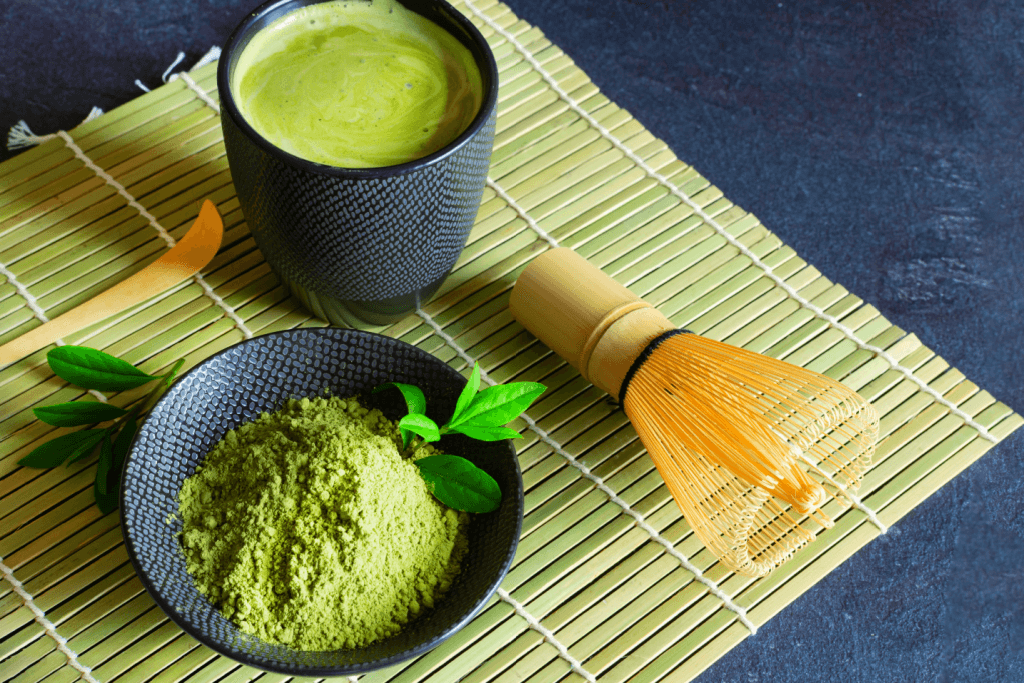
Green tea, a beloved drink in Japan, offers a delightful range of flavors and qualities. Each cup tells a story of cultivation and expert craftsmanship. Farmers begin by plucking tea leaves to make green tea, then process them to create various grades.
These grades determine the tea’s taste, aroma, and appearance. It is essential to understand the differences. Here are some grades of green tea that you should know about.
Matcha
Matcha, a green tea powder from Japan, has gained significant popularity in recent years. Western countries have embraced it in coffee shops and as an ingredient in sweets and desserts. Cultivators pick tea leaves, dry them, and grind them into a fine powder to make matcha. Matcha’s blend of slight bitterness and a touch of creaminess makes it unique.
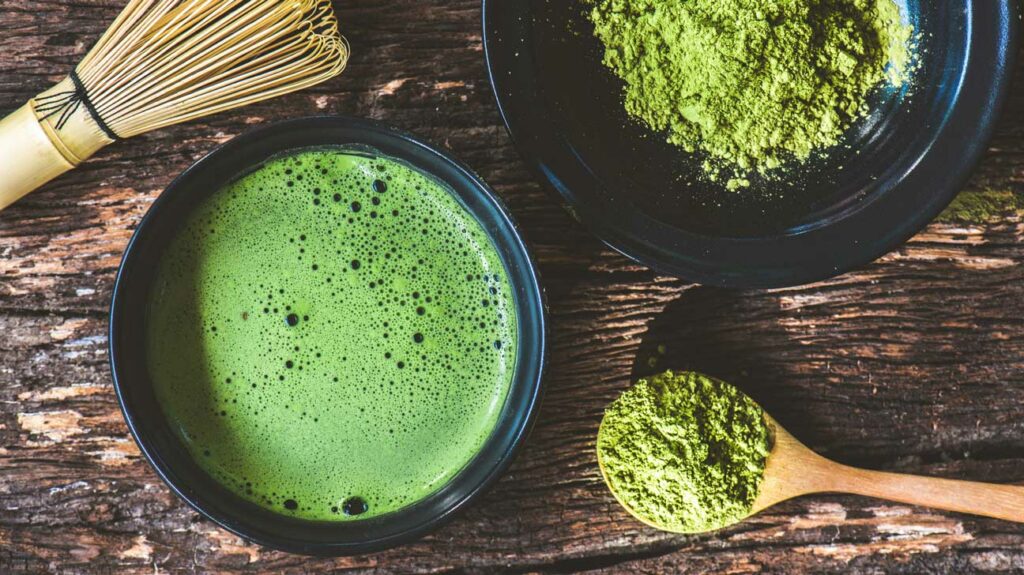
The history of matcha dates back to the 8th century in China. There, people cherished high-quality green tea. In the 12th century, a Japanese monk named Esai brought it to Japan, along with tea-making techniques. It quickly gained popularity, particularly among the upper classes. Japanese monks then discovered how to produce it on a larger scale and enhance tea cultivation.
Matcha isn’t just delicious. It also offers significant health benefits. It contains numerous antioxidants supporting your cells and reducing the risk of specific diseases. Additionally, it can promote heart, liver, and brain health. Due to these advantages and its delicious taste, matcha has become a global sensation, adored by tea enthusiasts and fans of Japanese snacks.
Shincha
Shincha, often known as “new tea,” is a distinct and highly coveted Japanese green tea. The first spring harvest is celebrated for its freshness and health benefits. Unlike later harvests, shincha is available for a limited time. Therefore, it quickly sells out due to its popularity.
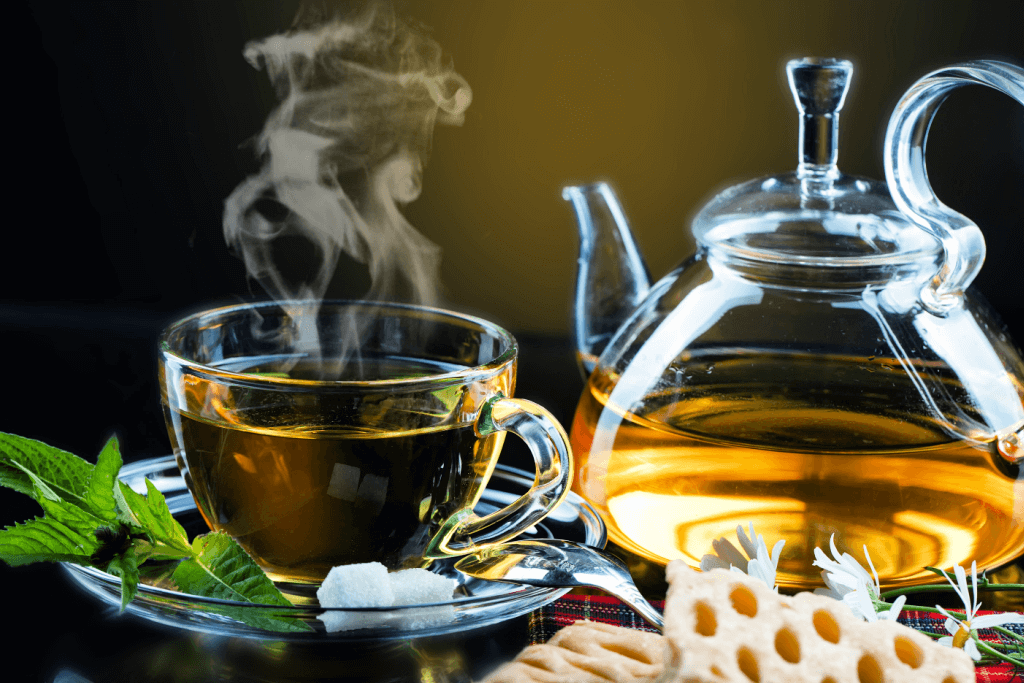
Shincha’s origin lies in the need to preserve the freshness of tea since older tea can lose its flavor. Farmers introduced the term “shincha” to separate the newly harvested tea from the previous year’s stock. Tea farmers handpick shincha leaves from tea shrubs after growing them outdoors to absorb sunlight and the elements. Further, shincha undergoes minimal steaming, preserving its unique flavor and aroma.
Shincha holds a refreshing, less bitter taste with flavors of tartness and sweetness. It’s an excellent choice for those new to green tea. Specifically available in late spring, each year brings a different tasting experience. This makes shincha a seasonal favorite among tea enthusiasts.
Looking to enjoy traditional Japanese green tea without leaving your home? Check out Sakuraco! Sakuraco delivers traditional Japanese snacks, teas, and sweets from local Japanese makers directly to your door.
Sencha
Sencha stands out for its distinctive preparation method. Unlike matcha, where powdered tea leaves are used, sencha infuses whole green tea leaves in hot water after processing. This results in a more traditional and widespread form of green tea in Japan. Sencha encompasses various types of green tea. Each offers unique flavors and characteristics.
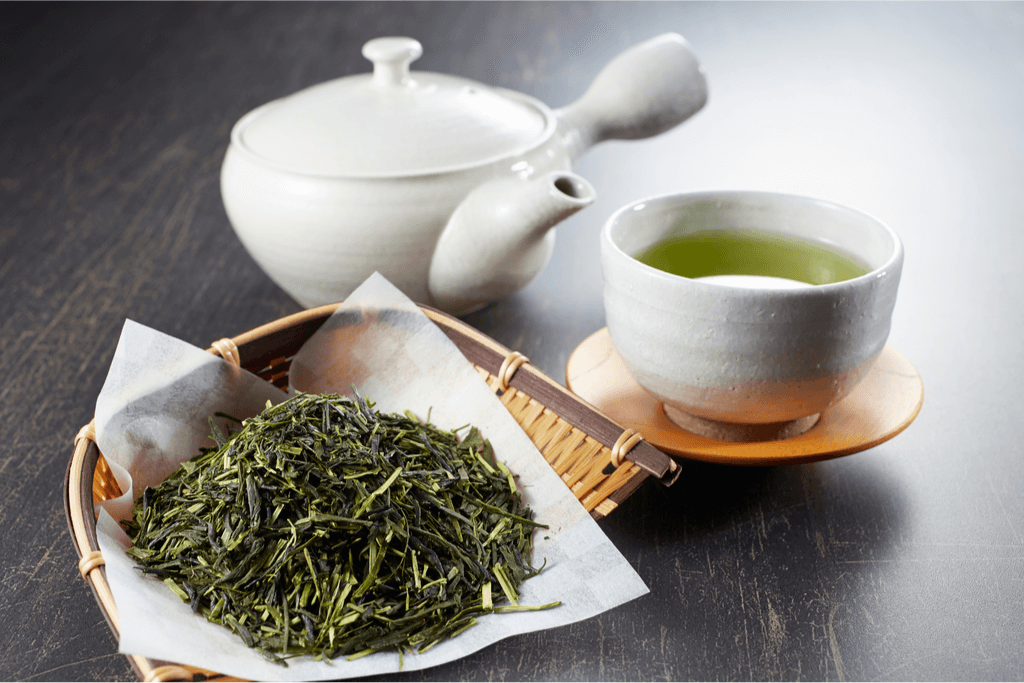
Known for its health properties due to high vitamin levels, sencha may reduce cancer risk and slow the aging process. It also aids in reducing bad cholesterol, boosts the immune system, reduces inflammation, and contains caffeine for an energy boost. It also combats oral bacteria and promotes dental health. Lastly, it shows the potential to protect nerve cells against brain diseases.
In essence, sencha represents a diverse world of green tea. It’s celebrated for its range of flavors and numerous health benefits.
Hojicha
Hojicha is a distinct and delightful Japanese green tea. It’s known for its unique preparation method and rich, roasted flavors. It is crafted using green tea leaves or stems, typically from sencha green tea. Hojicha’s roasting process sets it apart. The process makes hojicha reddish-brown in color and delightfully smoky.
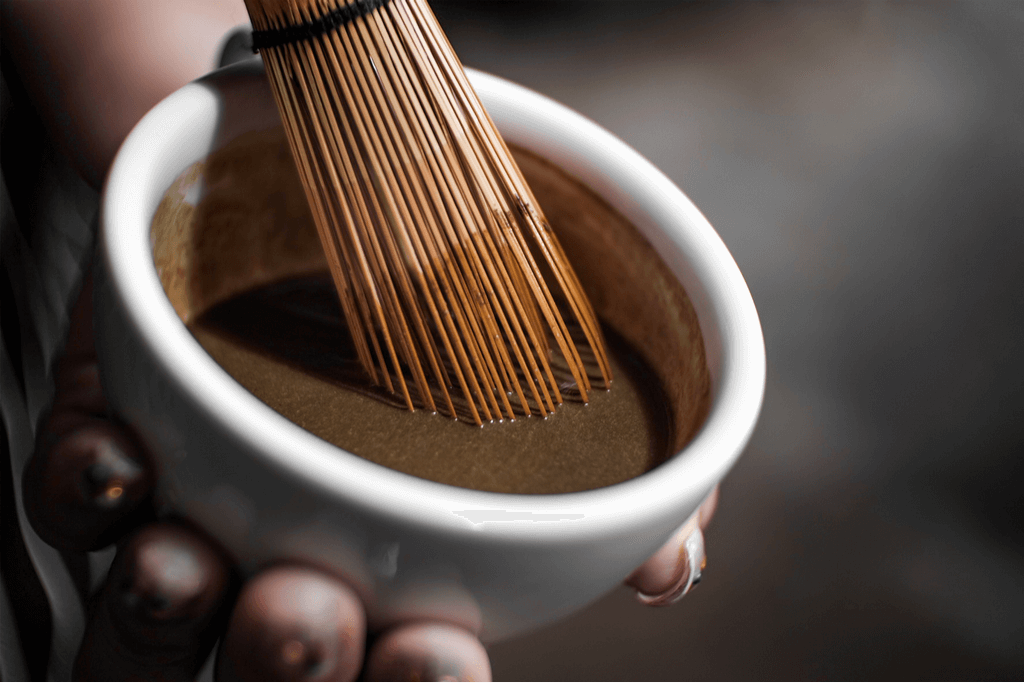
The roasting process transforms the tea leaves. This results in a distinct, toasty taste distinguishing hojicha from other green teas. Its versatility makes it a great ingredient for various sweets and drinks. Hojicha enhances sweet flavors with its unique, earthy notes. Hojicha is popular for those seeking a comforting and slightly nutty tea experience.
It complements an array of delectable treats. These include pudding, mochi brownies, marbled pumpkin bread, chiffon cake, and coconut macaroons. The roasted green tea powder enhances the flavor of these desserts, creating a delightful fusion of toasty and sweet notes. All in all, hojicha is a flavorful addition to both your cup and plate.
Why should I try these green teas?
You should try these green teas because of the diversity of grades. From matcha’s modern versatility to shincha’s fresh spring harvest. From sencha’s healthy benefits to hojicha’s roasted charm. In summary, these teas showcase the rich history and unique flavors that have made Japanese tea culture. Whether a tea connoisseur or a dessert lover, these teas offer a delightful journey for your taste buds. They stand where tradition blends with innovation. Which of these green teas is your favorite? Let us know in the comments below.

Discover authentic flavors with Sakuraco
Get Sakuraco 

Discover authentic flavors with Sakuraco
Get Sakuraco 
Related Articles

Mochi: How is Mochitsuki Made in Japan?
Mochitsuki is the Japanese tradition of pounding steamed rice to make mochi for the New Year. Families and neighbors gather to participate in this lively and meaningful tradition. The teamwork involved helps everyone feel a sense of connection.

Konpeito Candy: What Makes This Starry Treat Shine?
If you are a fan of the famous Demon Slayer series, then you probably know that the favorite treat of the adorable Nezuko Kamado is those tiny, colorful little sweets.

Kinako: The Amazing Roasted Soybean Powder!
Kinako is a very popular ingredient that can easily be found in many traditional Japanese sweets. It has a distinctive flavor, standing alongside other classic tastes such as red bean or sesame. Let’s explore this charming ingredient together, and who knows, you might even be able to make it in your own beloved kitchen!
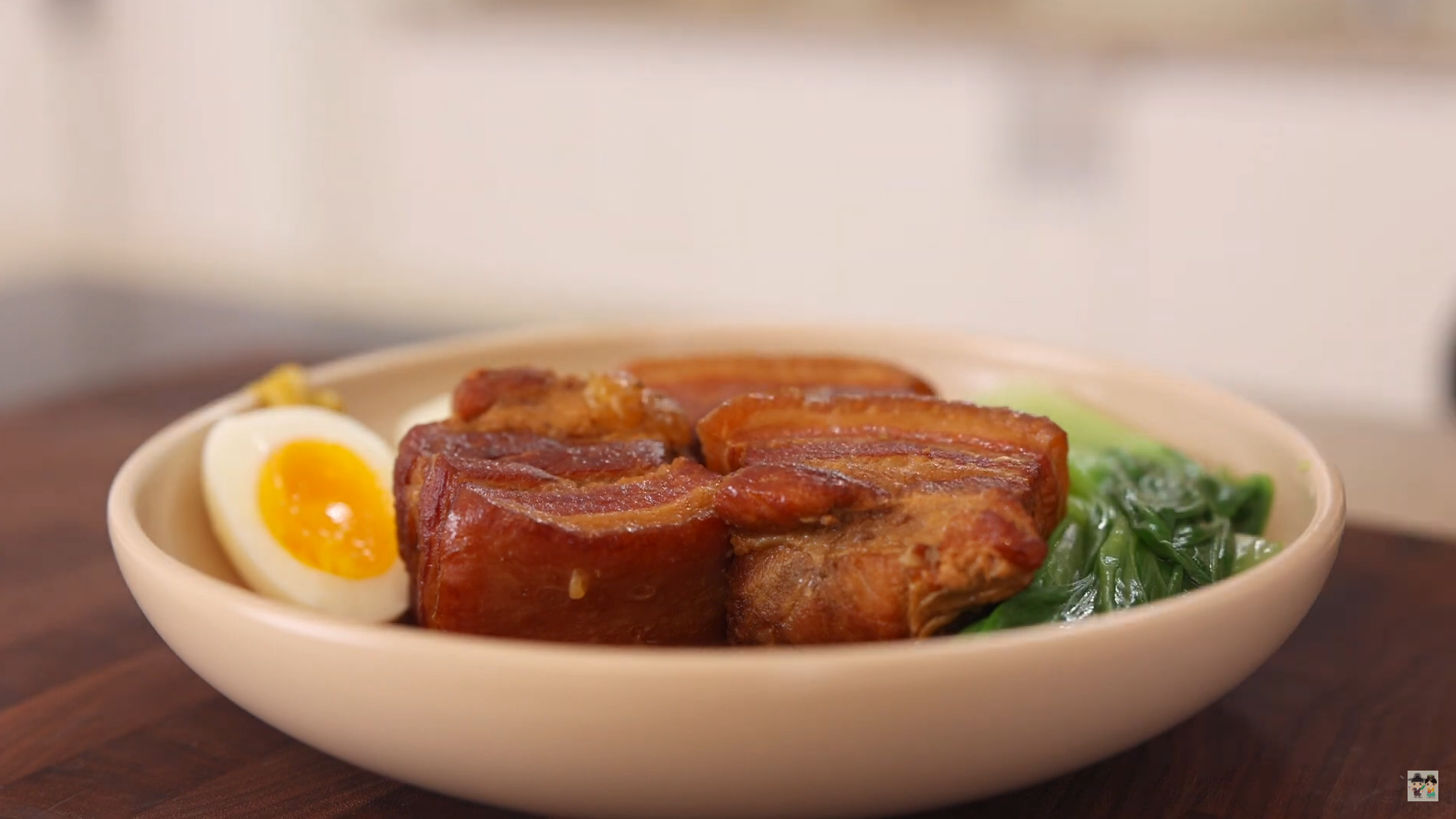
Aaron and Claire Make the Ultimate Japanese Pork Belly: Buta no Kakuni
If you want a Japanese dish that’s rich, tender, and simple to follow, Aaron and Claire show exactly how to make it in this episode. Aaron prepares Buta no Kakuni, a classic braised pork belly dish renowned for its rich flavor and tender texture.



